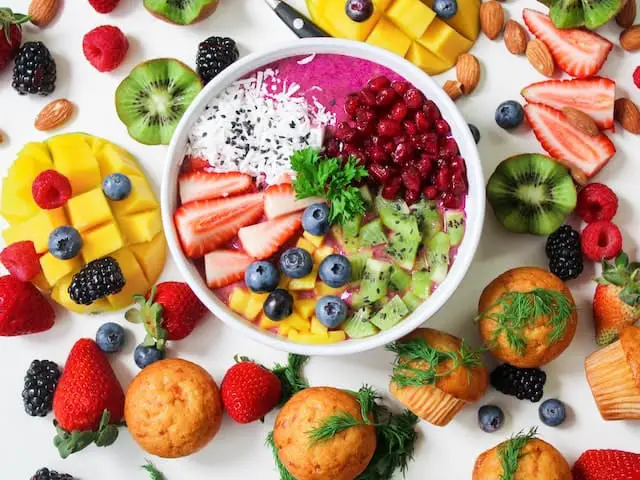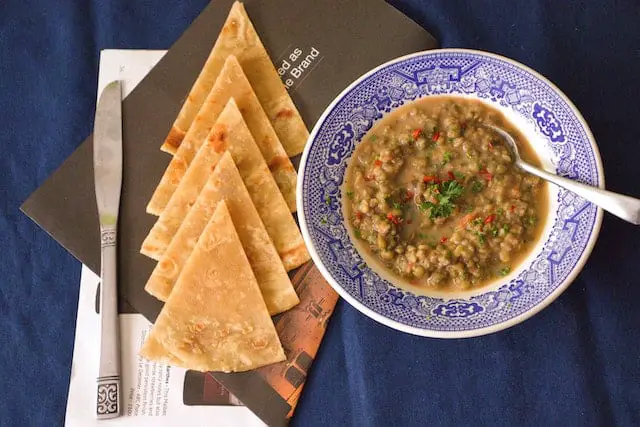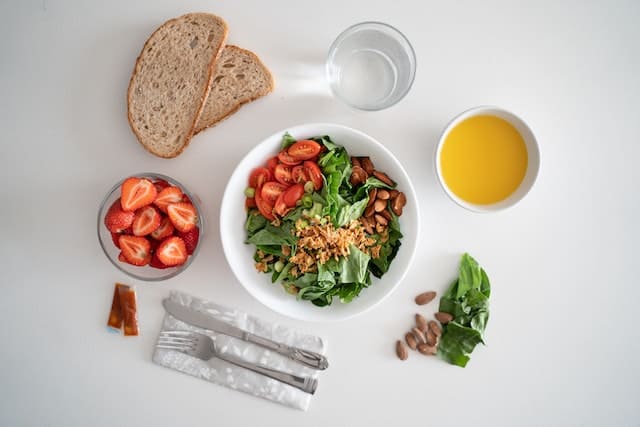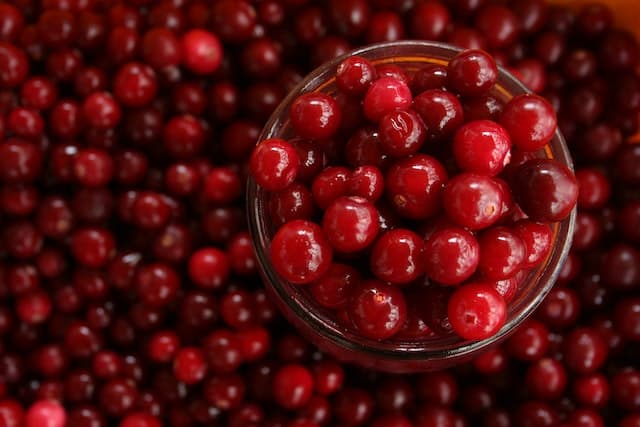High fiber recipes for constipation – Are you tired of feeling bloated and uncomfortable due to constipation? Look no further! In this article, we will provide you with a variety of high fiber recipes that are not only delicious but also effective in relieving constipation.
With these recipes, you can say goodbye to sluggish digestion and hello to regularity.
Imagine a world where you no longer have to rely on laxatives or over-the-counter remedies to find relief from constipation. Instead, you can feast on fiber-packed meals that not only taste amazing but also work wonders for your digestive system.
From mouthwatering smoothies bursting with fruits and vegetables to satisfying salads filled with nutrient-rich ingredients, we’ve got you covered.
And if you’re looking for quick and easy snack ideas that will keep your digestive system happy throughout the day, we’ve got those too!
So get ready to embark on a journey towards better gut health with these high fiber recipes for constipation.
Delicious High Fiber Smoothie Recipes

You can start your day off right with a refreshing and satisfying high fiber smoothie that’ll keep you feeling full and help relieve constipation. Nutritious high fiber breakfast options are essential for maintaining regular bowel movements. A high fiber smoothie made with ingredients like berries, bananas, spinach, and chia seeds can provide a great start to your day.
These ingredients aren’t just delicious but also packed with essential nutrients and fiber that promote healthy digestion.
In addition to being a nutritious breakfast option, high fiber smoothies can also be enjoyed as simple high fiber dinner recipes. Sometimes, after a long day, we crave something light yet filling for dinner. A smoothie made with fruits like apples, pears, and oranges combined with leafy greens such as kale or spinach can be the perfect choice. By incorporating these nutrient-dense ingredients into your dinner routine, you can ensure you’re getting enough fiber while enjoying a tasty meal.
As you explore the world of high fiber recipes for constipation relief, don’t forget to try out some fiber-packed salad recipes as well. Salads are an excellent way to incorporate various vegetables into your diet while increasing your daily fiber intake. By adding ingredients like broccoli, carrots, cucumbers, and beans to your salads, you’ll not only enjoy a delicious meal but also provide your body with the necessary roughage it needs for proper digestion.
Transitioning into the subsequent section about ‘fiber-packed salad recipes,’ you’ll discover even more ways to add variety to your meals while ensuring optimal digestive health without sacrificing taste or satisfaction.
Fiber-Packed Salad Recipes

Looking for some fiber-packed salad recipes? You’re in luck!
Try the Quinoa and Vegetable Salad, packed with protein-rich quinoa and a variety of colorful veggies.
Or, opt for the Chickpea and Spinach Salad, which combines nutrient-dense chickpeas with fresh spinach leaves.
And if you’re craving something a little different, the Roasted Beet and Feta Salad offers a unique combination of earthy beets and creamy feta cheese.
These salads are not only delicious but also provide a healthy dose of fiber to keep you feeling satisfied and promote digestive health.
Quinoa and Vegetable Salad
Quinoa and vegetable salad is a delicious and fiber-rich option for relieving constipation. Quinoa, a whole grain, is packed with dietary fiber that promotes regular bowel movements and helps alleviate constipation. It also offers numerous other health benefits, such as being high in protein, containing essential amino acids, and being rich in vitamins and minerals like magnesium and iron. Additionally, quinoa is gluten-free, making it suitable for those with gluten sensitivities or celiac disease.
To make a quinoa and vegetable salad, start by cooking the quinoa according to package instructions. While the quinoa is cooking, chop up an assortment of fresh vegetables like cucumbers, bell peppers, cherry tomatoes, and red onions. Once the quinoa has cooled down slightly, toss it together with the chopped vegetables in a large bowl. You can add a simple dressing made from olive oil, lemon juice, salt, and pepper to enhance the flavors. Feel free to get creative with your vegetable choices or add additional ingredients like feta cheese or olives for extra flavor.
Now let’s transition into discussing another delicious fiber-packed salad recipe – chickpea and spinach salad.
Chickpea and Spinach Salad
Chickpea and Spinach Salad is a nutritious and satisfying option that combines the protein-packed goodness of chickpeas with the vibrant flavors of fresh spinach. When it comes to constipation remedies, incorporating high fiber foods into your diet is essential.
Both chickpeas and spinach are excellent sources of dietary fiber, which can help promote regular bowel movements and relieve constipation. Chickpeas, also known as garbanzo beans, are packed with fiber, providing both soluble and insoluble fiber that aids in digestion. This helps to add bulk to your stool, making it easier to pass through the digestive system. Additionally, chickpeas are a great source of plant-based protein, making them a filling addition to any salad. Pairing them with fresh spinach not only adds a delicious flavor but also boosts the fiber content even further.
Spinach is rich in insoluble fiber, which adds bulk to the stool and helps prevent constipation. Transitioning into the subsequent section about ‘roasted beet and feta salad’, you’ll find another tasty option that can help alleviate constipation symptoms by incorporating high-fiber ingredients into your meals.
Roasted Beet and Feta Salad
Transitioning to a new flavor profile, the roasted beet and feta salad offers a delightful combination of earthy beets and tangy feta cheese. This fiber-rich side dish not only tantalizes your taste buds but also provides numerous health benefits.
Beets are packed with dietary fiber, which aids in digestion and helps prevent constipation. Additionally, they’re rich in antioxidants, vitamins, and minerals that promote overall wellbeing. Feta cheese adds a creamy texture and a punch of flavor to this salad while providing calcium and protein.
To fully appreciate the nutritional value of this salad, here are four key benefits of incorporating beets into your diet:
– Improved Digestion: The high fiber content in beets helps regulate bowel movements, preventing constipation and promoting regularity.
– Heart Health: Beets contain nitrates that can lower blood pressure levels, reducing the risk of heart disease.
– Enhanced Detoxification: Beetroots support liver function by aiding in the detoxification process due to their antioxidant properties.
– Increased Energy Levels: The natural sugars present in beets provide a sustainable source of energy without causing spikes in blood sugar levels.
By adding this roasted beet and feta salad to your meals, you not only introduce a delicious fiber-rich side dish but also reap the benefits provided by these vibrant root vegetables. Now let’s move on to exploring wholesome high-fiber snack ideas for those moments when you need a quick bite between meals.
Wholesome High Fiber Snack Ideas

Looking to add more fiber to your diet? Try these wholesome high fiber snack ideas that will keep you feeling satisfied and promote healthy digestion.
Did you know that incorporating just one cup of black beans into your daily snacks can provide nearly half of your recommended daily fiber intake? Black beans are not only delicious but also packed with fiber, making them a great addition to your snacking routine. You can enjoy them as a simple snack by roasting them in the oven with some olive oil and spices, or you can even use them as a base for homemade high fiber muffin recipes.
Another high fiber snack idea is to incorporate more fruits and vegetables into your snacking routine. Fruits like apples, pears, and berries are all excellent sources of dietary fiber. You can slice up some apples and pair them with a peanut butter dip for a satisfying and nutritious snack. For a savory option, try making a fiber-rich dip using ingredients like chickpeas or avocado. These dips not only add flavor to your snacks but also provide an extra boost of fiber.
Lastly, don’t forget about nuts and seeds when it comes to high fiber snacking. Almonds, chia seeds, and flaxseeds are all rich in dietary fiber and make for convenient on-the-go snacks. You can mix them with dried fruits for a trail mix or sprinkle them onto yogurt or oatmeal for added texture and nutrition. Just be mindful of portion sizes as nuts and seeds can be calorie-dense.
Incorporating these wholesome high fiber snack ideas into your diet is an easy way to increase your daily intake of dietary fiber. Not only will they keep you feeling satisfied between meals, but they will also support healthy digestion. So why not give these ideas a try? Your body will thank you!
Frequently Asked Questions
How long does it take for high fiber foods to relieve constipation?
High fiber foods can relieve constipation, but the time it takes varies. Natural sources like fruits and vegetables are better than fiber supplements. Adequate hydration is crucial for high fiber foods to work effectively for constipation relief.
Can high fiber recipes cause bloating or gas?
Yes, high fiber diets can cause bloating or gas initially. However, these symptoms usually subside as your body adjusts. The benefits of a high fiber diet for constipation far outweigh the temporary discomfort.
Are there any precautions to take when increasing fiber intake?
When increasing fiber intake, it’s important to take precautions. Start slowly and gradually increase your fiber intake to avoid bloating or gas. Drink plenty of water and consider using fiber supplements for constipation relief.
Can high fiber recipes be beneficial for weight loss?
Yes, high fiber recipes can be beneficial for weight loss. They help control blood sugar levels and lower cholesterol. Incorporating these recipes into your diet can contribute to a healthy and effective weight loss journey.
Can high fiber foods help with other digestive issues besides constipation?
A high fiber diet can benefit other digestive issues besides constipation. It has been shown to alleviate symptoms of irritable bowel syndrome (IBS) and improve overall gut health.
High Fiber Recipes for Constipation
In conclusion, incorporating high-fiber recipes into your diet can help alleviate constipation and promote better digestive health. By following the delicious smoothie recipes provided in this article, you can easily increase your fiber intake while enjoying a refreshing and tasty treat.
Additionally, the fiber-packed salad recipes offer a variety of options to add more vegetables and whole grains to your meals, providing essential nutrients and promoting regular bowel movements.
One interesting statistic that highlights the importance of increasing fiber intake is that only 5% of Americans consume enough dietary fiber on a daily basis. This paints a concerning picture as high fiber foods are crucial for maintaining a healthy digestive system and preventing constipation.
By incorporating these high-fiber recipes into your diet regularly, you can be part of the small percentage who prioritize their digestive health and experience the benefits of improved bowel regularity.
Practical tips such as including wholesome high-fiber snacks in between meals can also contribute to an increased daily fiber intake. By choosing snacks like nuts, seeds, or fruits, you not only satisfy hunger cravings but also boost your overall fiber consumption.
These simple yet effective strategies can make a significant difference in combating constipation and improving overall gut health.
Incorporating high-fiber recipes into your diet doesn’t have to be complicated or bland. With these delicious options at hand, you can enjoy flavorful meals while reaping the benefits of increased dietary fiber.
Remember that making long-term changes to your diet is key in maintaining good digestive health. So why not start now by trying out one of these incredible recipes? Your gut will thank you!

Stephanie Ansel is a well-known writer and journalist known for her unique and captivating writing style. She has written many articles and books on important topics such as the lifestyle, environment, hobbies, and technology and has been published in some of the biggest newspapers and magazines. Stephanie is also a friendly and approachable person who loves to talk to people and learn about their stories. Her writing is easy to read and understand, filled with lots of details and information, and is perfect for both kids and adults who want to learn about important topics in an interesting way.






